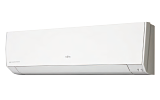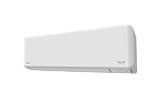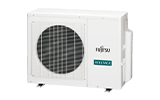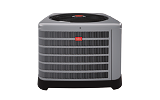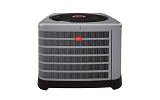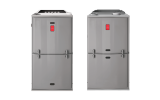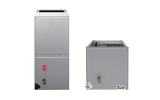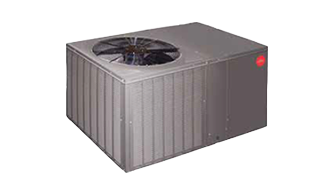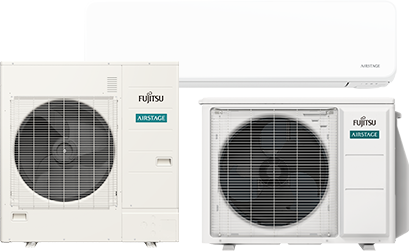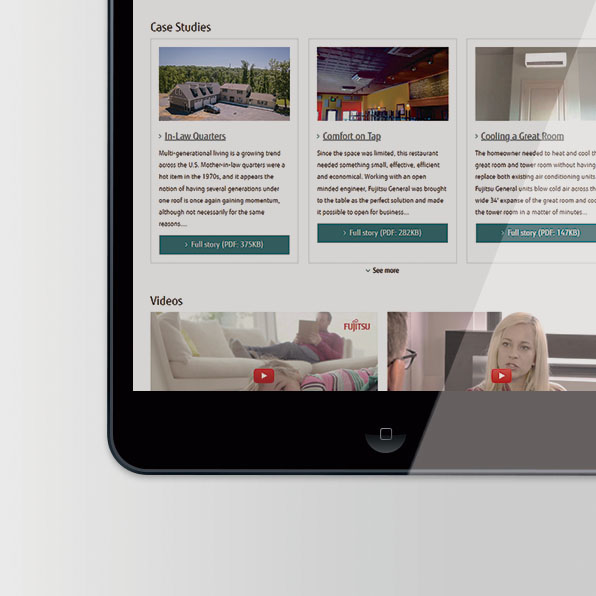In August 2022, President Biden signed the Inflation Reduction Act into law, a comprehensive energy policy bill that has a record $369 billion reserved spending for climate and energy initiatives. This legislation offers several tax credits and rebates that reward homeowners for purchasing higher efficiency, ENERGY STAR®-certified and Consortium for Energy Efficiency-specified equipment.
25C Nonbusiness
Energy Property
Credit (Tax Section 25C)
Provides tax credit of 30%, up to $2,000, for qualifying heat pump installation
HEARHome Electrification
and
Appliance Rebate
Heat pump cost offset may be as high as $8,000 per participating home
HOMESHome Owner
Managing Energy
Savings
Residential homes with energy reduction of 35% are eligible for maximim rebate of $4,000
What you need to know:
Nonbusiness Energy Property Credit (Tax Section 25C)
Effective January 1, 2023, this tax credit gives homeowners up to 30% of the total of product and installation costs. The installed product must meet Consortium for Energy Efficiency’s highest efficiency tier. Available Tax Credits are up to $2,000 for qualified heat pumps, and $600 for qualified air conditioners and furnaces. To obtain this credit, it is required that you provide a Qualified Manufacturer Code. The Fujitsu General QM Code is F8N3. This credit will expire on 12/31/25.
HEAR (Home Electrification and Appliance Rebate)
Part of the Inflation Reduction Act (IRA), the HEAR outlines rebates to cover point-of-sale costs for electrifying homes in low-to moderate income households. The intention is to help U.S. family’s save money on their monthly energy bills, improve the quality of indoor air while reducing Green House Gas (GHG) emissions.
Low-to-Moderate Income Households Can Qualify for Up to $14,000
HEAR is a rebate program that covers 100% of electrification project costs up to $14,000 for low-income households, for moderate-income households it covers 50% of project costs. Households where income is more than 150% of adjusted median income (AMI) are not eligible. For multi-family dwellings, 50% of the households in the building need to meet the income eligibility requirements.
Funds are administered through the state energy offices, which have some flexibility on program structure. Currently 13 States have implemented their HEAR Program with more expected in Q4 2025.
Highlights of the HEAR Rebate include:
$4.5 billion Home Electrification and Appliance Rebate (HEAR) administered by state energy offices and Indian Tribes for qualified electrification projects.
- This national rebate program is intended to support low and moderate-income homeowners.
- Qualified households can receive a rebate of up to $14,000 for specific equipment up to:
- $8,000 to offset qualified heat pump (for space heating or cooling) costs.
- $4,000 to offset the cost of electric panel upgrades.
- $2,500 for electrical wiring upgrades.
Products must meet the SEER2, EER2, and HSPF2 requirements outlined by ENERGY STAR® to qualify for the HEAR rebate.
HOMES (Home Owner Managing Energy Savings)
The Inflation Reduction Act (IRA) offers HOMES rebates for energy efficiency upgrades that improve the overall energy performance of a single-family home or multi-family building through September 2031.
The HOMES program provides performance-based rebates for whole-house energy saving retrofits. The amount of the rebate varies by the amount of energy savings—up to $8,000 (or $400,000 for a multi-family building) depending on energy savings and household income. HOMES is currently available in 6 States with more expected in Q4 2025.
The HOMES rebate is based on Area Median Income (AMI). Rebates are doubled for low- and moderate-income households (LMI) (individuals making less than 80% of area median income) to help those with the highest energy burdens to better-afford upgrades. Retrofits that achieve modeled energy savings of 20 to 35% are eligible for a rebate of 50% of the project costs, up to $2,000. Retrofits that achieve modeled savings >35% are eligible for up to $4,000. The rebates increase to 80% of costs up to $4,000 and $8,000 for households at <80% AMI. Multi-family buildings are also eligible.
Disclaimer: Please be aware that funds are administered by the state and participation is voluntary on a state-by-state basis. Be sure to check if your state is participating in the Rebate Programs. Fund distribution is subject to the DOE and individual state implementation timelines. The advice offered here is intended as a basic guide only and not to be used as, or substituted for, professional tax preparation advice. We strongly advise you seek professional support for assistance and advise you to consult with a certified tax preparation specialist or CPA as appropriate.
Resources
- See a list of Fujitsu General products that meet IRA standards here (PDF: 216KB).
- To see more on the IRA and access the IRA Savings Calculator please visit https://www.rewiringamerica.org/
 .
. - Learn more about Fujitsu General products
- Fujitsu General will be updating this page as more information becomes available.
